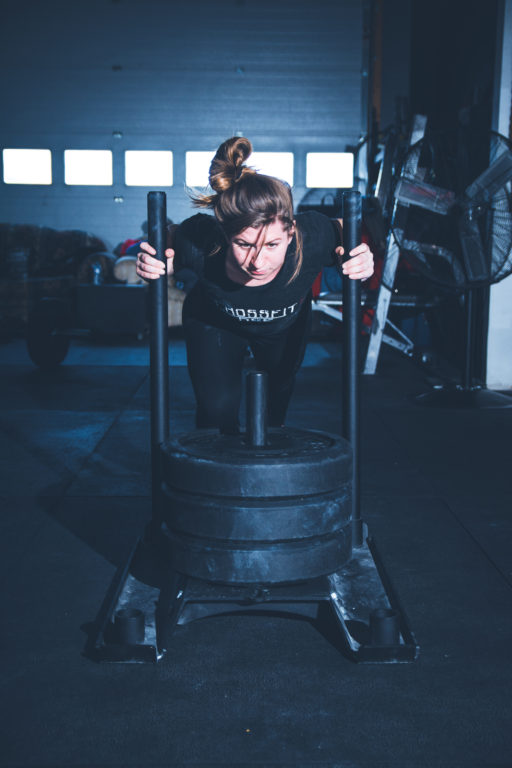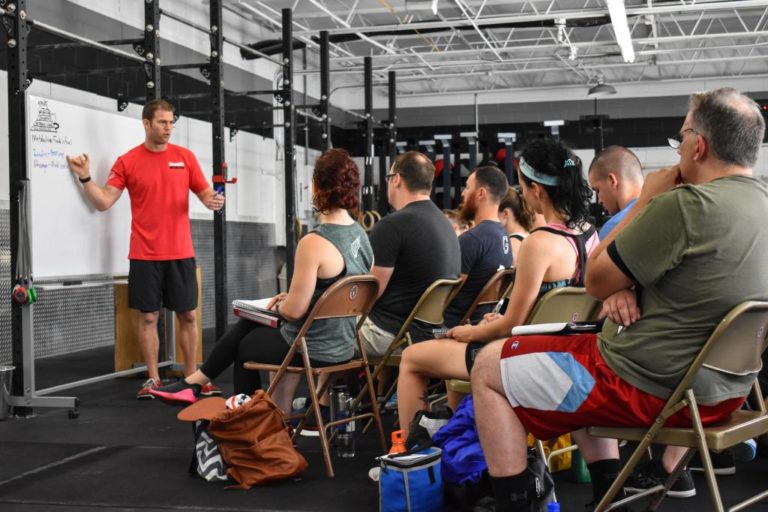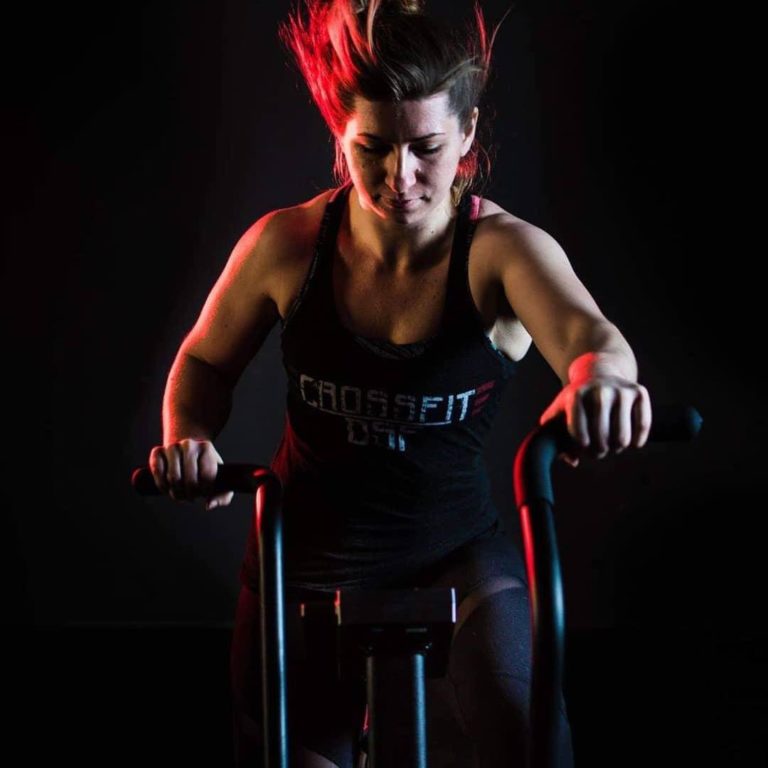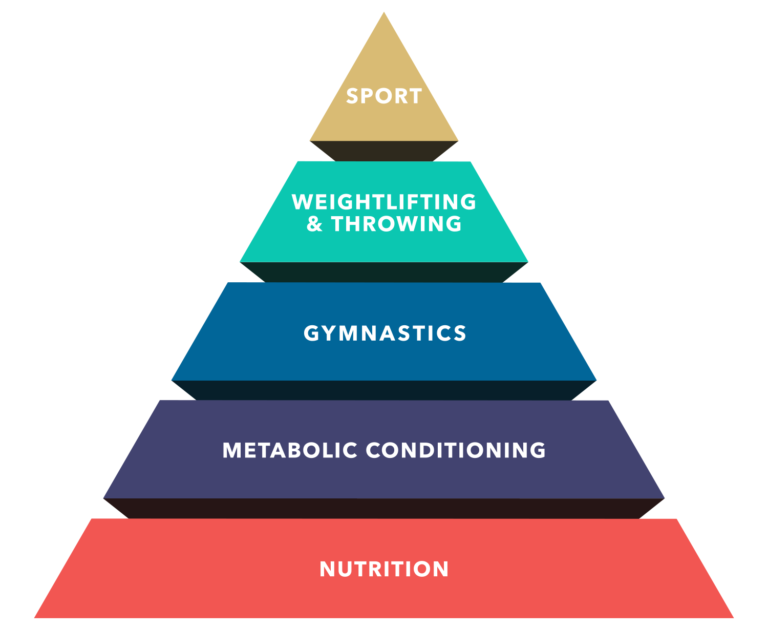
Elsie Jahn
For seven years, Elsie Jahn pushed her body to the limit.
She started CrossFit in 2011 when she was 21, and by 2012 she was training six or seven days a week. Jahn spent the summer doing a CrossFit competition every weekend, and by September she was so exhausted she took an entire month off. When Jahn returned to training, she didn’t feel recovered. Even after a month’s rest she felt an overwhelming urge to nap most of the day and had trouble regulating her emotions.
Then in 2015 Jahn’s life got even more stressful. She opened her own gym and continued to train for at least two hours a day. The aches and pains accumulated. A shoulder injury prevented her from lifting any weight overhead, and she found her strength decreasing, even though she was training more.
In 2018 Jahn decided she’d had enough. She completely stopped training and closed her gym in 2019.
“I was sick of working all the time,” Jahn said.
“I was sick of training. I actually barely trained in 2019. I just was not excited about it. I didn’t want to do it,” she said.
Rest and recovery are essential parts of training, but it can be difficult for some CrossFit athletes to strike the right balance. Some athletes, like Jahn, push themselves to the brink, not realizing they’re sabotaging their own progress by training too often. Other athletes struggle with motivation and take too much time off then wonder why they aren’t improving.
Write It All Down
In the early days of CrossFit, most athletes followed a three-day-on, one-day-off, two-day-on workout schedule. That usually meant working out Monday through Wednesday, taking Thursday as an active recovery or rest day, and then finishing with workouts Friday and Saturday. Others followed a consistent three-day-on, one-day-off schedule.
Joe Westerlin, a Level 1 Seminar Staff Flowmaster who founded CrossFit Omaha in 2007, said this schedule came from observations of early CrossFit athletes.
“It was found they were able to maximize both volume — meaning number of workouts in a week, month, year — and intensity with that schedule,” Westerlin said.
“Instead of going all week long and then taking two days off, the belief was that three days on and one day off would allow you to keep the intensity high before those rest days came,” he said.
The other advantage of this schedule, Westerlin said, was it provided five to six workouts in a week, which was more than a traditional training schedule.
The problem with this approach, however, is there’s no room for individual variation. Not everyone reacts to training in the same way. Your individual response can change over time due to aging, illness, stress, or a variety of other factors.
“You certainly want to go based on how you feel, but our minds can be deceiving,” Westerlin said.

Joe Westerlin discusses the theoretical hierarchy of development during a Level 1 Certificate Course (CrossFit Journal).
Westerlin says the best way to develop a recovery strategy is to focus on measurable, objective factors.
“Regardless of the work-to-rest schedule somebody picks, we should never lose sight of the fact that your results will tell the truth,” he said.
If you regularly experience improvements in the gym, your health is good, and your injuries are minimal and manageable, then your recovery-to-training ratio is probably just right. However, if you aren’t seeing progress in the gym, you have chronic or acute injuries that don’t seem to go away, and you’re constantly feeling tired, you may need more recovery days.
The only way to know for sure is to start tracking everything — not just your workouts and nutrition but your health markers and state of mind. Some find wearable health trackers, like WHOOP, make tracking this information easy.
A lack of recovery might not be the only culprit if you’re feeling exhausted and your performance is suffering. The cause could also be nutrition, sleep, or stress. It’s important to pay attention and record not only your workout scores and lifts but how you feel each day and details about your nutrition and sleep patterns. Once you start writing down not only your scores but also how you’re feeling, your motivation levels, how you’re sleeping, and your nutrition, you’ll get a better sense of your ideal recovery schedule.
“If you’re noticing a regular pattern of lethargy, and you notice sleep disruptions, or if you’re noticing vast differences in your resting heart rate at different times of the day or your blood pressure, then that could certainly be an indicator that something is off,” Westerlin said.
Recovery Equals Strength

Jahn
Once Jahn started doing CrossFit again in 2020, she took a completely different approach. She found a strength-based mobility company called Primal Mobility and resolved her shoulder issues. Instead of training hours a day, every day, Jahn now works out for about an hour a day, five days a week. She only does high-intensity workouts twice a week and makes sure she fits in longer bike rides or runs on the other days.
“I feel a lot better now,” Jahn said. “I’m not tired all the time and I’m more consistent with my sleep.”
Jahn also noticed an improvement in her performance.
“I’m back to lifting weights that I was lifting in 2018, when I was peaking,” she said.
She’s consistently adding weight to all her lifts every month, and she doesn’t have any of the constant aches and pains she experienced previously.
“It’s more fun again, too,” she said.
Jahn said she follows a set schedule but adjusts her training based on things like her state of mind or her menstrual cycle.
“When I’m in my premenstrual week I always know I need to back off on my volume and I use lighter weights, just because I’m achy, I’m grumpy. I always know I need a deload week if I am starting to get really negative about my workouts,” she said.
Jahn knows if negative thoughts start to take over she’s in danger of overtraining, so she backs off on the intensity.
While it’s good to have a set schedule, it’s also important to understand that things change over time depending on your health, age, stress levels, and goals.
Not every athlete pushes too hard. Some disappear from the gym for days at a time at the first hint of soreness. This too impedes progress.
“Everyone has individual differences in both physiological and psychological tolerance,” Westerlin said.
“There are some who have an incredible psychological tolerance, and sometimes they’re pushing themselves when they shouldn’t be. But then we also know that there are people that are the opposite of that. They cave to the mental side. Even though they’re not necessarily ready or requiring a rest day, they take it anyway because it’s what their mind is telling them,” he said.
If you know you struggle with motivation, push yourself to go to the gym even when you feel tired. Track your progress and health markers, and if your scores improve and you feel good, stick to the schedule.

Jahn
What to Do on Your Rest Day
Once you’ve figured out your rest day schedule, what should you do on your day off? Spend the day on the couch, engage in some light exercise, or just stretch and work on your mobility?
Westerlin said the goal with recovery days is to create blood flow. You can achieve that through movement with low-intensity exercise like walking or riding a bike, or just follow your normal warm-up and cool-down routine and skip the workout.
Another way to promote blood flow is a contrast shower, going from a cold whirlpool or tub into a hot tub, sauna, or hot shower.
“Cold temperatures make things constrict, and when you go to something hot, that makes it dilate. That back-and-forth dilation-constriction really does to a certain degree the same thing the low-intensity exercise does: It creates blood flow,” Westerlin said.
Another way to promote blood flow is by wearing compression gear or using VooDoo Floss, which compresses the joint with an elastic band and temporarily restricts blood flow to the area. When the band is taken off, blood rushes into the area.
Stretching, massage, and foam rolling are also excellent rest day activities that help improve blood flow and aid recovery. Along with encouraging blood flow, your rest days are also an opportunity to give your nervous system a break, especially if you typically train high-skill movements at high intensity.
If you hate the idea of staying out of the gym for a day, you can use your rest day to practice light skill work. Westerlin suggests working on gymnastics skills or doing a series of progressions with an empty barbell.
“It can be light skill work to where you’re not stressing the body enough to break it down, but you’re working on little skill factors,” Westerlin said.
Nutrition First
The most common mistake Westerlin sees when it comes to recovery has to do with what happens in the kitchen.
“There’s certainly a large number of CrossFit athletes of the everyday variety that just neglect the nutritional component in general, and that can inhibit your ability to get the results that you want,” Westerlin said.
Eating processed foods, refined sugars, consuming excessive amounts of alcohol, and not eating enough protein creates unwanted inflammation and inhibits the body’s ability to rebuild and repair.
“Not only are you not getting the body composition that you desire and building the muscle mass that you desire, but you’re creating sickness in the body, whether that’s metabolically or whether it’s orthopedically,” Westerlin said.
If you’re the type of person who struggles with mental toughness and has trouble motivating to regularly work out, you might consider sticking to a strict schedule for your workouts and recovery days. However, if your coaches and training partner have told you that you have a tendency to overtrain, listen to your body and take rest if you feel exhausted and unmotivated.
“Choose rest before it chooses you,” Westerlin said.
All photos of Elsie Jahn courtesy of Elsie Jahn
Comments on Recovery Strategies: How to Know When to Take a Day Off (and When to Keep Going)
Great article
Joining CrossFit for the first time two years ago in my 60’s and loving it, COVID and retirement allowed me to ramp up to daily wod plus two strength classes, a gymnastics private and a barbell class each week. When my skills got to where I could add modest weight, I first learned I had to eat more. Recently, I came to realize that I need at least one rest day, or I have nothing left for my gymnastics drill. The beauty of CrossFit and my gym is that things are so well coached, I rarely get sore. The problem with that is I didn’t realize how hard I am working!
That’s awesome Bruce
That’s awesome Bruce
Great article thanks! With a 5-day working week and kids/family, it is hard or unfair for me to workout on company or family time. Having said that, a garage gym and a quick ‘Fran’ can always be fitted in - unfortunately 😂
I am in the UK but I visit Omaha infrequently, I will drop in when I am next in town - your box and team look quite superior! Guy
This was very timely for me. Thank you for sharing!
Thank you very much stuff we know but forget always good to refresh🙏
Fantastic piece!!
It can be all too easy to get sucked into the 'more is better' mindset. It does take time to notice what works for you and that is coaches come into the equation. :-)
Gotta love me a rest day!

Recovery Strategies: How to Know When to Take a Day Off (and When to Keep Going)
8